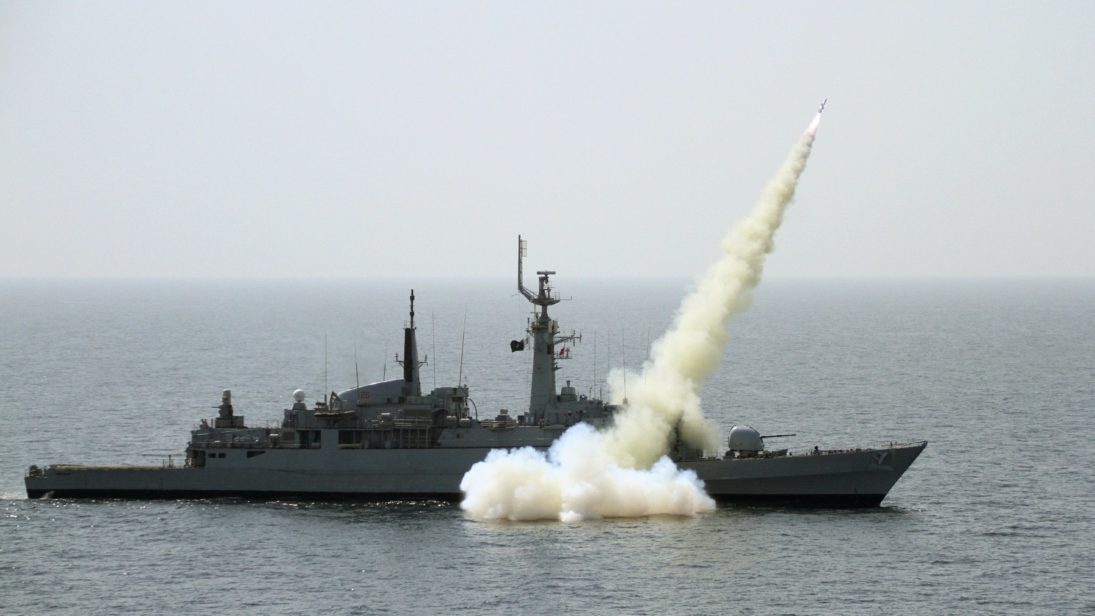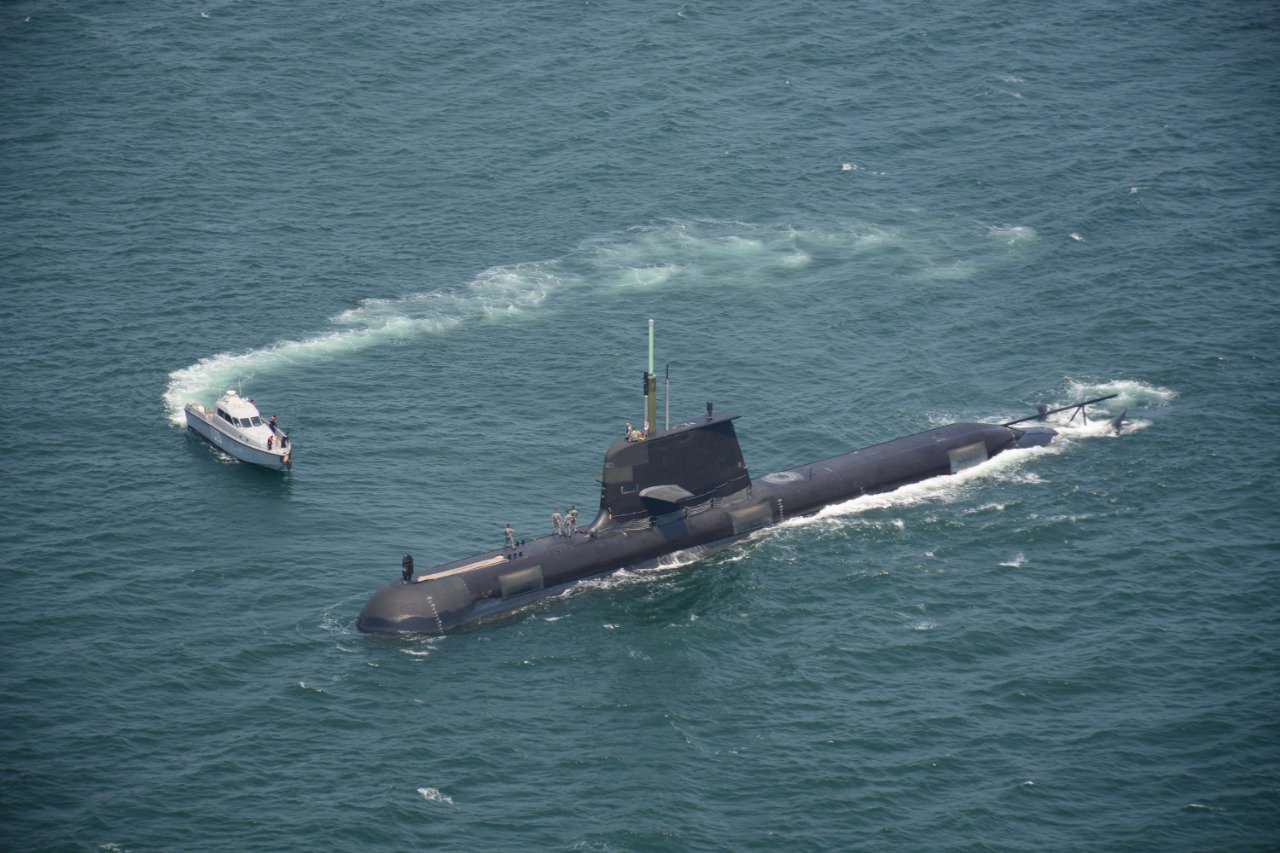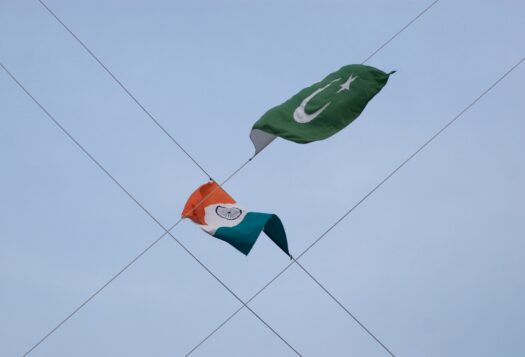
In South Asia, the maritime dimension is a recent development in the nuclear deterrent calculations between Pakistan and India. While India’s naval nuclear program has made significant strides in the past three decades, Pakistan’s sea-launched nuclear capability remains at a nascent stage. This article explores the driving factors behind Pakistan’s pursuit of a sea-based nuclear deterrent, the relevance of this capability in Pakistan’s overall nuclear policy, and the implications for strategic stability in South Asia.
Pakistan’s pursuit of a nuclear triad by developing an undersea deterrent is predominantly driven by the perceived need to enhance the credibility of its nuclear deterrent. Its rationale for developing this capability is a product of regional security dynamics, including the fast paced growth of India’s naval nuclear forces and possible contemplation of counterforce targeting strategies, which pose significant danger to the survivability of Pakistan’s land and air nuclear forces.
Rationalizing Pakistan’s Pursuit of Sea-based Deterrence
The growing uncertainty surrounding India’s no first use nuclear policy and its acquisition of new technologies, including high-speed and precision strike weapons with greater mobility, signify a gradual shift in New Delhi’s nuclear posture from assured countervalue retaliation to pre-emptive counterforce strategy. This change in India’s posture towards and its increasing ability to carry out pre-emptive strikes against Pakistan accentuates the challenges that Pakistan perceives that it faces to ensure the survivability of its nuclear forces.
Sea-based nuclear capability, which is traditionally seen only as instrument of retaliation, is likely to be an integral component of New Delhi’s evolving strategy. Former Indian military officials have hinted at the possibility of employing SLBMs for counterforce strikes. Observers also note that while the K-15 and K-4 SLBMs—with the estimated ranges of 700 km and 3,500 km respectively—may not credibly threaten China, their utility remains limited to Pakistan. The development of the extremely precise K-15 SLBM, with almost zero circular error probable, signifies a capability that diminishes collateral damage and allows India to carryout precision nuclear strikes against an adversary’s military targets. Improved accuracy of SLBMs thus provides that ability to transform the role of SSBNs from instruments of retaliation to potent counterforce weapons.
The deployment of an Indian nuclear submarine in the aftermath of the Pulwama stand-off demonstrated India’s inclination to bring in the nuclear factor even at lower levels of escalation ladder and its resolve to use a “second-strike platform even before its first-strike options.” Contrary to common perceptions, whether Indian sea-based nuclear force is to be used only in retaliation to a first-strike remains merely a question of intent, as the capabilities are already being developed. The future deployment of long-range and multiple independently targetable re-entry vehicles (MIRV) capable SLBMs, such as the K-5 and K-6, would further accentuate Pakistan’s dilemma of perception with regards to the potential first-strike role of the Arihant-class submarines.
Besides technological advantages, the possible geographic positioning of Indian SSBNs in closer proximity to Pakistan may offer flexible options for offensive nuclear operations, including a mixture of countervalue and counterforce missions, because of reduced warning time. In November 2016, the Pakistan Navy detected and compelled an Indian submarine to move away from its territorial waters. Again in March 2019, Pakistan detected another Indian submarine moving in its Exclusive Economic Zone. These events signify how India may consider using sea-based forces in offensive operations closer to Pakistan’s coast.
At present, Pakistan’s undersea nuclear capability is currently limited to a single submarine-launched cruise missile (SLCM), the Babur-III, it additionally lacks a nuclear ballistic missile submarine (SSBN). However, to escape this vulnerability and increase nuclear survivability, Islamabad increasingly feels incentivized to diversify its nuclear force structure by deploying more weapons at sea.
The survivability of Pakistan’s nuclear arsenal is further threatened by Pakistan’s limited landmass and the possibility of an Indian “hard counterforce strike against Pakistan’s relatively small number strategic nuclear assets on land.” Such a scenario only exacerbates Islamabad’s security dilemma by directly affecting the credibility of its retaliatory capability and compel it to explore countermeasures against a naval nuclear force that is not confined to a mere retaliatory mission. At present, Pakistan’s undersea nuclear capability is currently limited to a single submarine-launched cruise missile (SLCM), the Babur-III, it additionally lacks a nuclear ballistic missile submarine (SSBN). However, to escape this vulnerability and increase nuclear survivability, Islamabad increasingly feels incentivized to diversify its nuclear force structure by deploying more weapons at sea.
Sea-based nuclear capabilities also offer Pakistan a way of countering India’s growing ballistic missile defence (BMD) capabilities. Pakistani experts believe that the introduction of BMD negatively affects Islamabad’s deterrence strategy by tempting India to contemplate conducting pre-emptive strikes with the confidence that a missile shield would intercept any remaining nuclear weapons, thus minimizing the repercussions of inadvertent escalation. Undersea nuclear capability is one of the counter measures against this threat. While announcing the test launch of Babur-III SLCM, the ISPR statement highlighted the missile’s capabilities to evade hostile radars and air defenses. Besides stealth features of missiles, a sea-based delivery system, unlike land-based missiles, offers flexible targeting options because of the ability to launch anywhere from sea and thus holds the ability to penetrate through adversary’s missile defenses. By sailing closer to adversary’s territory and being relatively undetectable, submarines have a chance to launch missiles from unanticipated angles and trajectories and thus help to defeat enemy’s early warning radars and missile defense. However, despite significant strides in space-based surveillance, it still remains difficult for India to deploy enough BMD sensors to cover the entire Arabian Sea. Thus, continuing to be able to penetrate Indian missile defense systems remains a major motivation for Pakistan to develop undersea delivery systems.
Since May 1998, one of the primary objectives of Pakistan’s nuclear policy has been to not allow the adversary to undermine the notion of mutual vulnerability, upon which nuclear deterrence in South Asia rests. However, in the past few years, with India’s introduction of offensive military doctrines and destabilizing weapons systems such as the BrahMos missile and anti-satellite weapons, it seems that India has begun to pursue an escalation dominance strategy against Pakistan. If either of the adversaries in a nuclear equation lacks a credible second-strike capability, it undermines the notion of mutual vulnerability, leads to strategic imbalance, and ultimately results in deterrence instability. The growth of India’s naval nuclear program and the perception that India is weakening its commitment to mutual vulnerability, is contributing to Pakistan’s drive to sea-based nuclear weapons.

Future Trends and Implications for Strategic Stability
Although Pakistan does not possess an SSBN at the moment, its viable sea-based deterrent helps it stabilize its deterrence relationship with India. Historically, naval nuclear deterrence has relied on submerged platforms as they offer a fair degree of concealment as compared to land-based nuclear forces. This significant advantage of reduced vulnerability of nuclear arsenal remains imperative for stabilizing deterrence. It is also worth noting that despite being the most critical platform for survivable assured second-strike capability, SSBNs are not the first platforms that nuclear weapons states pursue to achieve deterrence, largely due to economic and technological considerations. Nevertheless, the increasing probability of Indian pre-emptive strikes may require Pakistan to develop SSBN capability as the next logical step in its journey towards a credible sea-based deterrent.
A significant challenge that Pakistan’s sea-based deterrent may have to confront in future relates to India’s rapidly increasing anti-submarine warfare (ASW) capabilities. Along with Indo-U.S. cooperation on ASW, which includes a recent deal for MH-60R Seahawk helicopters, India’s Defence Research and Development Organization (DRDO) has been developing multiple autonomous underwater vehicles (AUVs) to meet futuristic requirements of the Indian Navy. One implication of this trend could be a shift in ASW operations from defensive to offensive missions owing to greater surveillance and persistent observation of the seas.
Although there has yet to be the practical application of offensive ASW capabilities, if India decided to take this step, Indian ASW capabilities could limit the operational mobility of Pakistani submarines and endanger their survivability by locating and targeting Pakistani submarines on patrol. This growing vulnerability of undersea nuclear forces to counterforce attack could lead to a scenario that could be a precursor to crisis instability. The integration of such systems with India’s submarines and other remote sensing capabilities will require Pakistan to factor in growing trends in ASW warfare. These evolving trends may have implications for Pakistan’s nuclear alert levels and compel it to proportionally diversify land and sea-based deterrent forces to prevent against its own vulnerability. Possible offensive use of such systems against the platforms that otherwise aim to enhance deterrence would only instigate an underwater arms race and worsen crisis stability, thus leading to countermeasures that may include placing weapons on high alert.
With the growing perception in Pakistan that India’s commitment to mutual vulnerability is weakening, the future of deterrence and strategic stability in South Asia remains elusive. As Alfred Wohlstetter pointed out, the ability to survive adversary’s pre-emptive attack is a precondition to maintain deterrence and thus remains the driving force for Pakistan to place nuclear weapons on submarines.
Conclusion
With the growing perception in Pakistan that India’s commitment to mutual vulnerability is weakening, the future of deterrence and strategic stability in South Asia remains elusive. As Alfred Wohlstetter pointed out, the ability to survive adversary’s pre-emptive attack is a precondition to maintain deterrence and thus remains the driving force for Pakistan to place nuclear weapons on submarines. The holistic assessment of evolving regional security environment suggests that Pakistan’s pursuit of sea-based deterrence is based on rational calculations, defined by concept of mutual vulnerability. In the absence of Pakistan’s effective nuclear deterrent at sea, the evolving maritime environment may present dangers of conflict escalation and possible use of nuclear weapons. India’s growing early warning and counterforce capabilities may trigger Pakistan’s sense of a lack of strategic depth as a result of geographical restrictions. It is also encouraging to note that instead of responding by massively increasing its land-based nuclear arsenal, Pakistan has opted for diversifying its nuclear platforms that could ensure greater survivability and also offer credible targeting options to counter Indian missile defenses.
In South Asia, if there is little space for serious efforts to mitigate the security dilemma between India and Pakistan, both nations should at least agree that mutually assured destruction is the cornerstone of stability. To sustain stability in the region, India and Pakistan need to recognize that they lack the capability to destroy each other’s weapons in a first strike. If India continues to emphasis China factor as being the primary driving force behind its sea-based capability, it should at least adopt a posture that is not aggressive towards Pakistan. However, India’s development of highly precise short to intermediate range SLBMs, that remain Pakistan specific, deployment of an SSBN early in a crisis to signal intent of use, and along with offensive statements, seems to indicate that India remains poised towards Pakistan. Reducing the incentive for India to launch nuclear weapons first and increasing Pakistan’s own confidence to carry out retaliatory strike could contribute to nuclear restraint by preventing the early use of nuclear weapons in a heightened conflict. Thus, Pakistan’s growing confidence in survivability of its second-strike capability could bolster crisis stability.
India’s fast growing ASW capabilities and their possible aggressive use may fundamentally change the strategic picture and result in instability by endangering the survivability of undersea nuclear forces. Particularly during a crisis, such force deployments may miscommunicate intentions and exacerbate potential dangers of escalation. South Asian strategic environment lacks any arms control measure to guarantee that the cycle of assured destruction would not begin. Security conditions in the region continue to deteriorate because of unbridled development of military capabilities, suggesting the importance of arms control and conflict resolution as being significant tools to limit the use of adversarial offensive capabilities.
It is likely that Pakistan’s pursuit of developing sea leg of the nuclear triad will eventually include naval vessels propelled by nuclear fuel. The fragile strategic balance in the region compels Pakistan to develop sea-based nuclear capability to add credibility to its nuclear deterrence and would enhance strategic stability in South Asia by assuring the efficacy of its second-strike capability and potentially deterring New Delhi from contemplating counterforce targeting options.
Abandoning strategies based on mutual vulnerability will impact strategic stability. It is high time that states devise deterrence strategies based on this principle. In a dyad, if both countries have invulnerable second-strike capabilities, there is less incentive to strike first. Contrarily, if a state perceives itself as invulnerable and possesses the capability to carry out a counterforce first strike, that state is incentivized to attack pre-emptively. Therefore, Pakistan sees its pursuit of a sea-based deterrence as an effort to reinforce mutual vulnerability and maintain strategic stability in the region.
***
Click here to read this article in Urdu.
Image 1: Pakistan Navy via Facebook
Image 2: Indian Navy via Twitter


